#Ecommerce plugin development
Explore tagged Tumblr posts
Text
The Ultimate Guide to Ecommerce Development: Tips, Trends, and Best Practices
#Ecommerce platform comparison#Best Ecommerce solutions#Ecommerce development tips#Ecommerce website design trends#Ecommerce website optimization#Custom Ecommerce development#Ecommerce website security#Mobile Ecommerce development#Ecommerce development services#Ecommerce plugin development#Ecommerce UX design#Ecommerce payment gateways#Ecommerce SEO strategies#Ecommerce analytics tools#Ecommerce CMS platforms#Ecommerce website migration#Ecommerce API integration#Ecommerce website performance#Ecommerce conversion rate optimization#pool
1 note
·
View note
Text
Expert Shopware Development Services | Hire Professional Shopware Developers
Unlock your e-commerce potential with our specialized Shopware Development Services. At ProtonBits, we provide expert Shopware developers who are dedicated to building, optimizing, and scaling your online store seamlessly. With our tailored solutions, you can ensure a smooth and efficient experience that drives growth and success for your business.
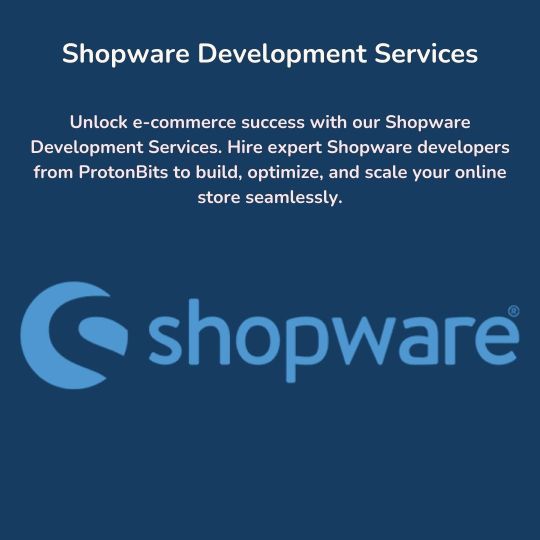
#shopware#shopware development#shopware plugin#shopware api#shopware cms#shopware ecommerce#shopware development company#shopware developers#shopware development services#shopware integration services#shopware software#shopware plugins#shopware hosting#shopware e-commerce#shopware integrations#shopware development agency#shopware developer#hire shopware developer#hire shopware developers#shopware mobile app
3 notes
·
View notes
Text
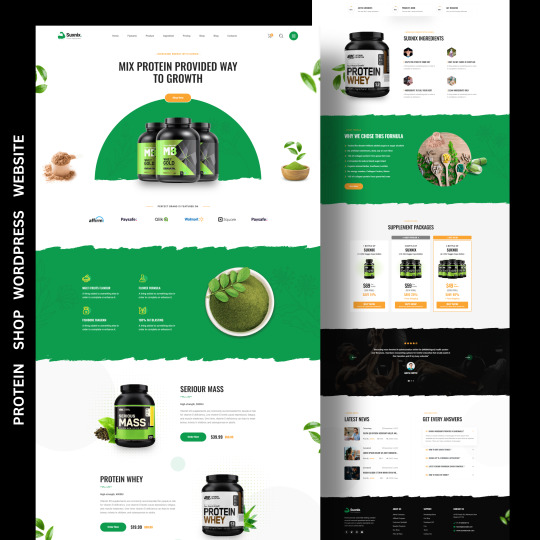

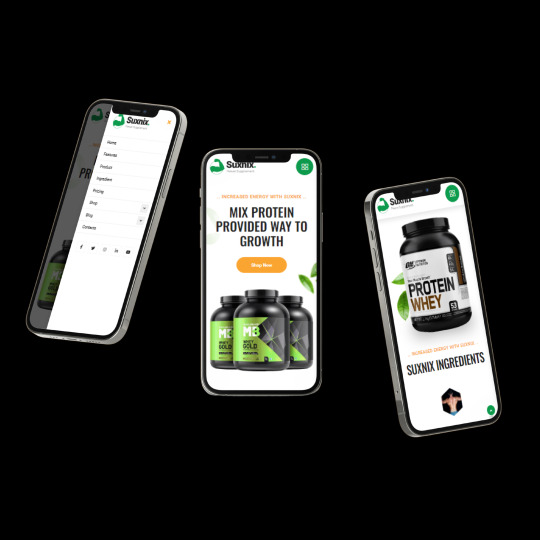
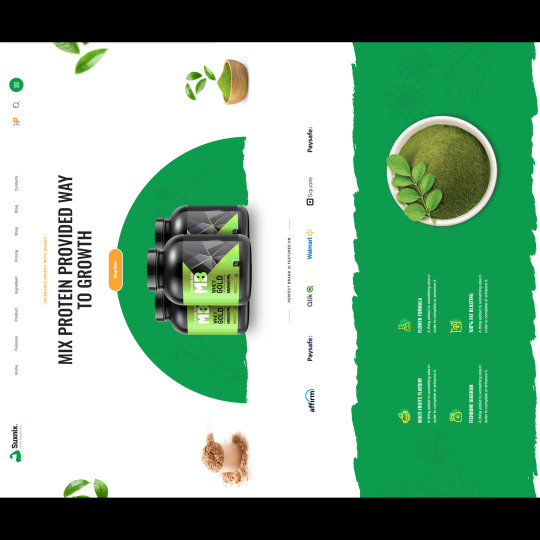
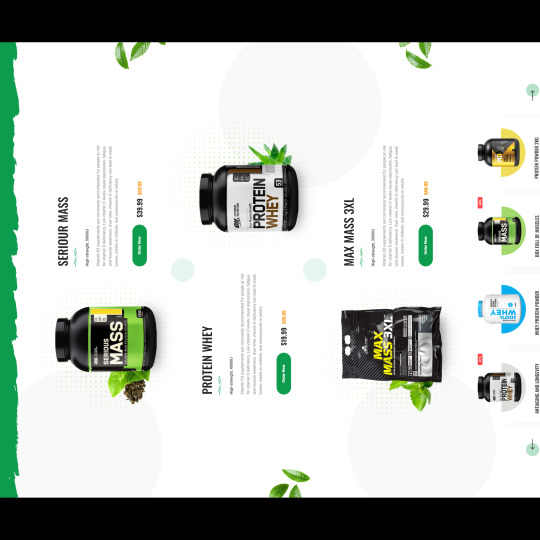
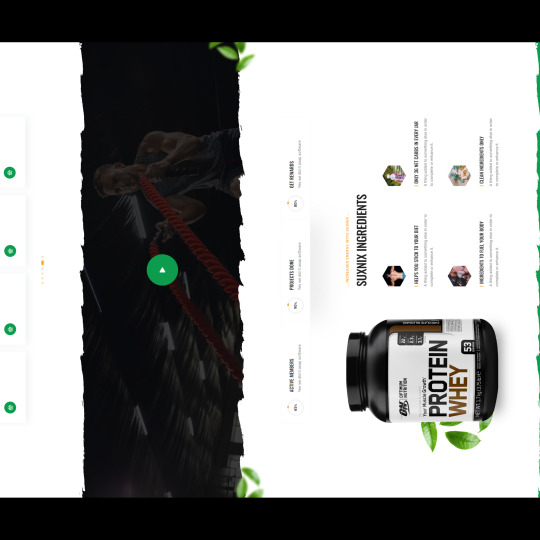
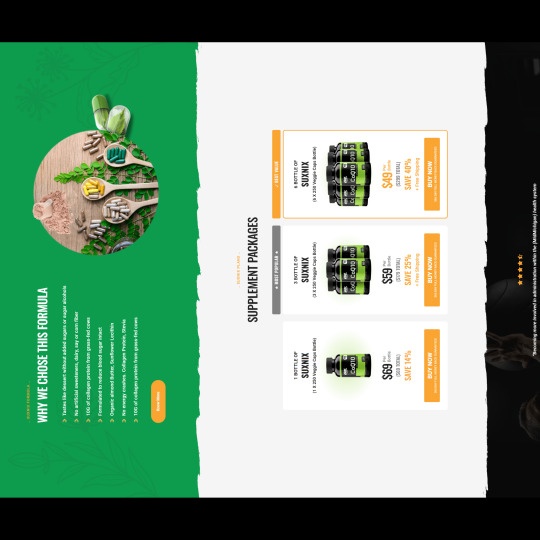
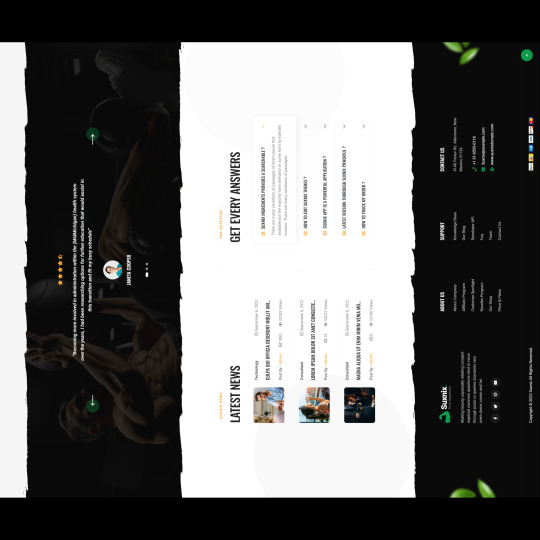

PROTEIN SHOP WordPress WEBSITE Follow @ppmsourav@pixelparkmedia
Designed by : https://shorturl.at/byBJ3 Check out their incredible work on this link ☝🏻
➡ DM for professional WordPress website . . . . . . .
#website#wordpress#wordpress themes#webdevelopment#web design#seo#web developers#wordpress development#website optimization#wordpress web design#wordpress website#wordpress plugins#ecommerce website development#web development#website design#website traffic#website development#website seo#software#digital marketing
4 notes
·
View notes
Text
Why Is WordPress Development So Popular?
In this blog, we share the top website development company in India and also provide detailed information about why WordPress development so popular? it is user-friendly, cost-effective, customizable websites, SEO friendly, and also you can add plugins to increase functionality. If you want to create a WordPress website contact the best WordPress development company in Rajkot today!
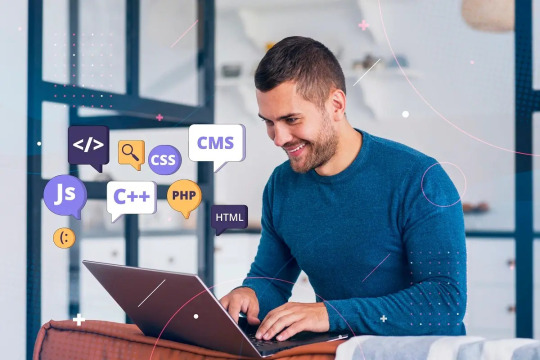
#website development company in india#wordpress development company in rajkot#WordPress development#SEO-friendly#SEO friendly plugins#wordpress ecommerce plugins
2 notes
·
View notes
Text
Tiered Membership Strategies That Actually Boost Revenue
In today’s hyper-competitive digital landscape, tiered membership programs have emerged as a proven model to increase customer retention, improve user experience, and most importantly — boost revenue. Brands that implement strategic tiered membership models often witness improved average order values, better engagement rates, and stronger brand loyalty.
What Is a Tiered Membership Strategy?
A tiered membership strategy is a structured system where users gain access to benefits based on their membership level. These levels usually include Free, Basic, Pro, and Premium (or similar), each offering progressively more features, content, or discounts. The key to success lies in strategically designing these tiers to maximize perceived value and encourage membership upgrades.
Benefits of Tiered Membership Models
1. Enhanced Revenue Through Upselling
Tiered membership structures create natural upselling opportunities. Users on lower tiers are constantly exposed to the benefits of higher plans, increasing the likelihood of upgrades — which directly boosts recurring revenue.
2. Better Customer Segmentation
Different tiers allow businesses to segment their audience based on spending habits, engagement levels, and interest. This segmentation enables highly targeted marketing, improving conversion rates and customer satisfaction.
3. Improved Member Retention
When users unlock better benefits through progression or loyalty, they are more likely to stick around. This gamification-like model strengthens user commitment and keeps churn rates low.
Building Tiered Membership Plans That Drive Conversions
1. Define Clear and Compelling Value Propositions
Each tier must offer a clear, tangible benefit over the one below it. Ambiguous perks or overlapping features can confuse users and reduce conversion. Ensure that each tier has a unique, value-driven proposition that justifies the price point.
Free Plan: Basic access with limited functionality
Basic Plan: Core features for casual users
Pro Plan: Extended features for power users
Premium Plan: All-inclusive, priority support, exclusive content
2. Use Tier-Based Pricing Psychology
Pricing plays a crucial role. Create a logical flow between pricing levels where the highest-tier plan seems like the best value. This is often achieved using decoy pricing tactics and highlighting a popular “middle” plan that balances features and cost.
Example:
Basic – $19/month
Pro – $39/month (Most Popular)
Premium – $59/month
When designed this way, users often view the Premium plan as a better deal due to its minimal price difference and added benefits.
3. Limit Key Features in Lower Tiers
To encourage upgrades, reserve premium features for higher tiers. Limit functionalities such as:
Advanced analytics
Priority support
Exclusive resources (courses, webinars, etc.)
Automation tools
Early access to new features
This creates a natural desire to upgrade once users see the limits of their current plan.
Effective Tiered Membership Examples That Work
1. LinkedIn Premium
LinkedIn uses a powerful tiered model offering:
Career advancement tools (Basic)
Sales tools (Sales Navigator)
Hiring tools (Recruiter Lite)
Business insights (Business Plan)
Each level caters to a specific user type, ensuring targeted value and excellent upsell potential.
2. Amazon Prime
Amazon doesn’t have multiple tiers, but its single-tier membership offers so much value (videos, music, free shipping) that users are willing to pay annually. Bundling services can also mimic a tiered structure when designed with intent.
3. Patreon
Creators on Patreon offer different tiers with increasing value:
$5: Early content access
$10: Behind-the-scenes updates
$25: Exclusive Q&A or merch
This system not only builds revenue but deepens community engagement.
Keys to a High-Converting Membership Funnel
1. Leverage FOMO and Scarcity
Use limited-time offers, exclusive content, or early bird pricing to drive urgency and boost sign-ups or upgrades. Psychological triggers like FOMO (Fear of Missing Out) work wonders.
2. Provide Free Trials for Premium Tiers
Offer 7-day or 14-day free trials of your highest tier. Let users experience full value. Once they’ve tasted premium features, going back feels like a loss — significantly increasing conversion rates.
3. Highlight Social Proof
Use testimonials, star ratings, case studies, and usage stats (e.g., “Over 10,000 users upgraded last month!”) to build trust and reduce hesitation in tier jumping.
How to Promote Tiered Memberships Effectively
1. Dedicated Landing Pages for Each Tier
Build SEO-optimized landing pages for each membership level, explaining:
Who it's for
What’s included
How it compares to other tiers
This improves visibility and targeted search rankings for each audience type.
2. In-App or On-Site Upgrade Prompts
Strategically place upgrade CTAs within your platform:
“This feature is available in Pro only. Upgrade now.”
“Unlock advanced insights with Premium Membership.”
These in-context prompts are highly conversion-friendly.
3. Email Drip Campaigns Based on User Activity
Segment your list and send behavior-based email campaigns:
Free users → Highlight benefits of Basic
Basic users → Share success stories from Pro users
Abandoned upgrades → Offer discounts or trials
This ensures your tiered funnel is always nudging users forward.
Measuring the Success of Tiered Membership Models
Track these KPIs to assess and optimize your strategy:
Upgrade Rate: Percentage of users moving to higher tiers
Customer Lifetime Value (CLTV): Higher tiers should increase CLTV
Churn Rate: Lower churn reflects good tier design
ARPU (Average Revenue Per User): Indicates if users are choosing higher-paying tiers
Engagement Metrics: Usage frequency, feature adoption, session duration, etc.
Continuously A/B test pricing, features, onboarding flows, and promotional messages to fine-tune your membership performance.
Common Mistakes to Avoid
Overcomplicating Tiers: Too many options overwhelm users
Poor Feature Distribution: Key benefits must be reserved to create upgrade triggers
Lack of Clear Differentiation: Make it crystal clear why one tier is better than the next
Underpromoting Higher Tiers: Actively showcase the ROI of upgrading
Final Thoughts
A well-executed tiered membership strategy can be a game-changer for your revenue model. By designing compelling value, promoting smartly, and optimizing continuously, you unlock not just more money — but deeper loyalty and engagement from your customers
#discount#wordpress#woocommerce#free subscription#ecommerce website development#subscription box#membership#membership plugin
0 notes
Text
1 note
·
View note
Text
Woo-Commerce Plugins You need!

If you're thinking about starting your online store with WooCommerce, this well-known platform gives you many benefits. Security is handled by Wordfence, offering real- time firewall protection, malware scanning, and login security. AIOSEO helps stores get discovered on hunt machines with AI- powered SEO, schema luxury, and performance shadowing. LiteSpeed Cache ensures blazing-fast cargo times with garçon- position hiding, image optimization, and WooCommerce- apprehensive performance tweaks. To recover lost deals, Abandoned Cart Recovery captures wain data and uses dispatch, SMS, and Facebook Messenger to bring shoppers back. Tidio offers AI chatbots and live converse with deep WooCommerce integration, enhancing support and engagement. FunnelKit revolutionizes checkout and upsells with visual channel builders, smart product recommendations, and A/ B testing. Incipiently, OptinMonster boosts transformations with exit- intent popups, substantiated offers, and smart dispatch lead prisoner.
To learn more please click here and read our latest blog post.
#Woocommerce Custom Plugin Development#Woocommerce Plugin Development#Woocommerce Development Services#Custom Woocommerce Development#Why AIOSEO is the best WooCommerce SEO plugin#Best woocommerce plugin for ecommerce
0 notes
Text
Stay ahead in the digital game with the latest WordPress development trends shaping the UK in 2025! From AI-powered websites and headless WordPress to performance-optimized themes and enhanced security, our blog covers everything you need to know.
Read more at https://tinyurl.com/bdhkuwft
#branding#business#ecommerce#web developers#commercial#webdevelopment#wordpress development#wordpress website#wordpress plugins#wordpress#wordpress theme
0 notes
Text
How to Create a WordPress Website Using ChatGPT (Step-by-Step Guide)
Hello, friends! 😊 Are you looking to create a WordPress website but don’t know where to start? Don’t worry! In this article, we’ll walk you through the step-by-step process of setting up your website, from choosing a hosting provider to designing and optimizing it using ChatGPT. Let’s get started Step 1: Choose a Hosting Provider & Domain Name To launch a website, you need a hosting provider and…
#blogging#ChatGPT for WordPress#create WordPress site#digital marketing#eCommerce website#install WordPress#SEO optimization#web development#Website Customization#website design#WooCommerce#WordPress Hosting#WordPress plugins#WordPress Themes#WordPress tutorial#WordPress website
0 notes
Text
#Website Development Company#Website Development Service#Custom Website Development Service#WordPress Plugin Development Service#WordPress Theme Development Service#PHP Website Development Service#eCommerce Website Development Service#noida#nxlogy
0 notes
Text
WordPress Website Theme Ideas: Up-to-Date Strategies to Increase eCommerce Sales
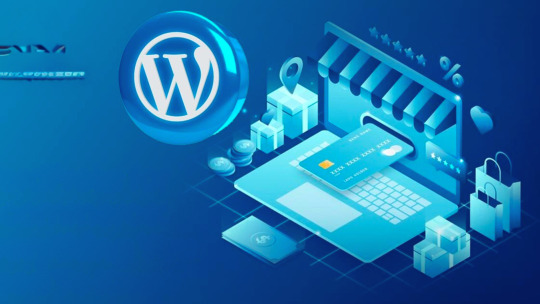
Introduction
When it comes to running an online store, your WordPress website theme is more than just a design element, it's a powerful tool that can help boost your eCommerce sales. If you choose the right theme and optimize it correctly, it can make a huge difference in user experience, site performance, and even SEO rankings. In this article, we’ll explore the best WordPress theme ideas and strategies you can use to create an eCommerce website that not only looks good but converts visitors into loyal customers. Whether you're working with WordPress website development services or planning a DIY redesign, these tips will help you maximize your store’s potential.
1. Go for a Mobile-Responsive Theme
Today, a large number of people shop on their mobile devices. If your website isn't mobile-friendly, you risk losing out on sales. A responsive WordPress theme automatically adjusts to fit any screen size, ensuring a smooth browsing experience across devices.
When you hire WordPress website development services, make sure they provide themes that are optimized for mobile devices. This small tweak can boost your website’s conversion rates and improve your SEO ranking, helping more potential customers find your store.
2. Speed Matters – Choose a Fast-Loading Theme
Page speed is crucial for any eCommerce site. Studies show that even a delay of a few seconds in page loading can result in lost sales. Choose a lightweight WordPress theme that’s optimized for speed.
If you’re working with a WordPress development company, ask them to help optimize your site’s performance. This includes reducing the size of images, enabling caching, and using fast-loading themes that ensure your customers don’t have to wait to make a purchase.
3. Clear and Easy-to-Find CTA Buttons
Your website should clearly guide visitors toward making a purchase. Adding prominent Call-to-Action (CTA) buttons like "Add to Cart" or "Buy Now" is crucial. These buttons should stand out and be placed where they’re easy to find.
With WordPress website development services, you can customize CTA buttons that match your store’s theme while standing out to customers. Make sure these buttons appear on product pages, your homepage, and throughout the shopping journey.
4. Search Functionality Is Key
An efficient search bar helps customers quickly find what they’re looking for. A great search feature lets users filter by categories like size, color, or price, making shopping easier.
If you choose to work with WordPress plugin development services, you can integrate advanced search features that enhance the user experience and make browsing smoother, leading to more conversions.
5. High-Quality Product Images
Since customers can’t physically touch or try your products, high-quality images are essential for online shopping. A WordPress theme that showcases product images well will help make your store more appealing and encourage purchases.
Ensure that your product images load quickly without sacrificing quality. If you're working with WordPress development solutions, they can help set up galleries or sliders that show off your products from different angles.
6. Secure Payment Options
Security is a top concern for customers shopping online. Ensure your WordPress theme is compatible with secure payment gateways like PayPal, Stripe, and credit card processors. This will not only protect your customers but also boost your store's credibility.
With WordPress website development services, your team can integrate secure payment options that make the checkout process simple and trustworthy for your customers.
7. Customer Reviews and Ratings
People trust the opinions of others. Allowing customers to leave reviews and ratings on your product pages can greatly influence new buyers. A WordPress theme that supports reviews and testimonials can boost customer confidence and increase sales.
Make sure your WordPress development services include integrating a review system that displays customer feedback clearly on product pages.
8. Social Media Integration
Social media is a powerful tool for eCommerce businesses. By integrating social sharing buttons into your WordPress theme, you give customers an easy way to share your products on platforms like Facebook, Instagram, and Pinterest.
This can help spread the word about your products, bringing more visitors to your site. If you're using WordPress web development services, they can easily integrate social media buttons and feeds directly into your theme.
9. SEO-Friendly Theme
For your website to rank well on Google and attract more organic traffic, you need a theme that’s optimized for SEO. An SEO-friendly WordPress theme will make it easier for search engines to crawl your site and improve your ranking.
If you’re using WordPress website development services, make sure your theme follows SEO best practices, including clean code, fast loading times, and optimized images.
10. Easy Navigation
A simple, clear navigation menu is essential for a smooth user experience. Visitors should be able to find their way around your site with ease, whether they’re browsing products, checking out, or reading blog posts.
If you’re working with a custom WordPress development company, they can help you create a navigation menu that’s simple, intuitive, and designed to guide customers to the products they’re looking for.
Conclusion
Your WordPress website theme is more than just a visual design, it’s a vital part of your eCommerce strategy. By focusing on elements like mobile optimization, fast loading speeds, clear CTAs, and SEO, you can create a website that not only attracts visitors but converts them into paying customers. Whether you're building your site from scratch or working with WordPress website development services, the right theme can make all the difference in increasing your eCommerce sales.
By implementing these simple yet powerful strategies, you’ll be on your way to creating an online store that’s both user-friendly and high-converting.
#WordPress Website Development Services#eCommerce WordPress Themes#WordPress Theme Ideas#WordPress Development Solutions#SEO for WordPress Websites#WordPress Website Optimization#Custom WordPress Development Services#Increase eCommerce Sales#WordPress Plugin Development
0 notes
Text
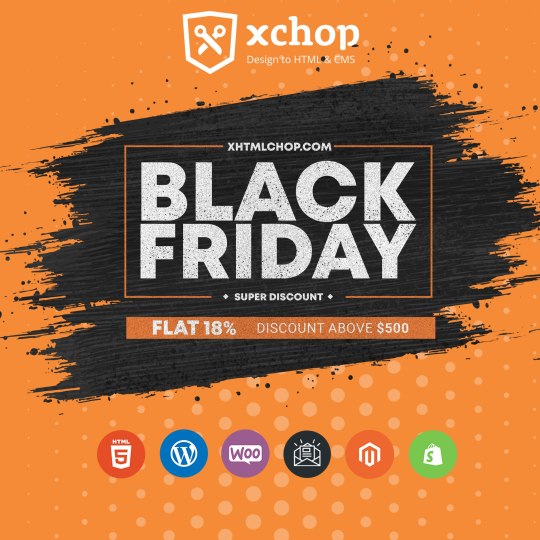
Get ready for the biggest savings of the year with XHTMLCHOP! We're offering an 18% discount on all new orders. Whether you need PSD to HTML, WordPress, Shopify, or any other conversion service, now is the perfect time to get started. Use Coupon Code: BlackF24 Don't miss out on this incredible deal! Visit our website and place your order today. Offer valid for a limited time only.
Visit us: https://www.xhtmlchop.com
#web#webdesign#figma to html#joomla#figma to magento#figma to wordpress#magento#website#webdevelopment#web graphics#wordpressdesign#psd to wordpress#wordpress#wordpress plugins#html#shopify development company#shopify#ecommerce#online store#online businesses#dropshipping
1 note
·
View note
Text
Cost to Build E-commerce Website in India
1. Introduction to E-commerce Website Costs in India
As e-commerce continues to transform retail in India, understanding the cost dynamics of creating an e-commerce website becomes crucial. Building a successful e-commerce site requires thoughtful investment across various elements, from hosting and design to marketing and maintenance. For those exploring this venture, knowing where and how much to invest can make a huge difference.
2. Why E-commerce is Booming in India
India’s e-commerce landscape has experienced exponential growth, driven by increased internet penetration, affordable smartphones, and changing shopping behaviors. People now value the convenience of online shopping, and businesses have adapted by expanding their digital presence. This surge underscores the importance of crafting an e-commerce platform that caters to a growing online audience.
3. Factors Influencing the Cost of an E-commerce Website
Platform Choice: Custom vs. CMS
The choice between a custom-built platform and a Content Management System (CMS) like Shopify, WooCommerce, or Magento directly impacts costs. Custom platforms offer tailored experiences but come at a higher cost, whereas CMS options provide affordable and flexible solutions.
Hosting: Shared, Dedicated, and Cloud Options
Hosting expenses vary based on whether you choose shared hosting, dedicated servers, or cloud hosting. Each has different levels of scalability, speed, and reliability. Shared hosting is cost-effective but may not support high traffic, while dedicated and cloud hosting provide enhanced performance for higher fees.
Domain Costs and Renewal Rates
The domain name, essentially your website’s address, requires registration fees, typically renewed annually. Premium domain names are more costly but can offer branding advantages, while standard domain names are more budget-friendly.
4. Understanding the Basic Website Development Costs
Core development involves setting up the site’s structure, implementing necessary functionality, and ensuring it performs optimally. Basic development costs can vary significantly depending on the complexity and functionality required.
5. Front-end Development: Bringing the User Interface to Life
Front-end development focuses on creating an attractive, user-friendly interface. This step includes designing visuals, arranging layouts, and ensuring a smooth user experience across devices, making it a key factor in engaging customers.
6. Back-end Development: Ensuring a Robust Infrastructure
Back-end development supports the functionality behind the scenes, enabling features like search, filtering, and payment processing. Investing in quality back-end development ensures your site runs smoothly and handles customer demands efficiently.
7. Essential Features for an E-commerce Website
Product Catalog and Management System
A structured product catalog with categories, filters, and descriptions is essential for ease of navigation, impacting overall usability and customer experience.
Shopping Cart and Checkout Process
A streamlined checkout process, equipped with cart functionality, ensures a smoother journey from product selection to purchase, reducing cart abandonment.
Secure Payment Gateway Integration
Integrating a payment gateway allows customers to make purchases securely. Payment gateways like Razorpay, Paytm, and others add costs but are critical for building trust.
8. Importance of Mobile Responsiveness in E-commerce
Mobile responsiveness allows your site to adapt to various screen sizes, ensuring a seamless shopping experience. A mobile-responsive design often involves additional costs but is indispensable in today’s mobile-first market.
9. Cost of Implementing a Custom Design
Custom design provides a unique brand identity but comes at a premium. It involves hiring skilled designers to create a look and feel that resonates with your brand and audience.
10. Integrating Third-Party Tools and Plugins
Third-party integrations enhance functionality, such as live chat, analytics, and inventory management. Although these add to development costs, they significantly improve the user experience.
11. Importance of SSL Certification and Security Features
An SSL certificate ensures that your website is secure, especially during transactions. E-commerce websites are vulnerable to cyber threats, making security investments essential.
12. Cost of Testing and Quality Assurance
Testing is essential to detect and fix bugs before launch. Quality assurance (QA) testing ensures that your site functions smoothly, with reliable performance across different devices and browsers.
13. E-commerce SEO and Digital Marketing Costs
On-page SEO
On-page SEO optimizes website elements like titles, tags, and URLs to improve search engine rankings. Good SEO attracts organic traffic and requires investment in keyword research, optimization, and monitoring.
Content Marketing and Blogging
A blog can drive traffic by offering valuable information and insights, which engage customers. Content marketing helps boost SEO and requires investment in content creation and promotion.
Social Media Marketing
Social media channels like Facebook and Instagram help build brand presence. While initially inexpensive, effective social media strategies often require paid ads and regular content creation.
14. Maintenance and Support: The Ongoing Costs
E-commerce websites require regular updates, security checks, and support services to remain operational and safe. Ongoing maintenance can help address issues promptly and keep the site in optimal condition.
15. Calculating the Cost for Various Sizes of E-commerce Sites
Small-scale E-commerce Sites
Small-scale sites often require minimal features, keeping costs relatively low. These are ideal for startups or small businesses with limited budgets.
Medium-sized E-commerce Sites
Medium-sized websites involve additional features, larger product catalogs, and possibly custom designs, increasing the budget.
Large-scale or Enterprise E-commerce Sites
Large e-commerce sites are built for high traffic and extensive functionality, requiring substantial investments for scalability, customizations, and powerful hosting solutions.
16. Choosing a Freelancer vs. Development Agency
Freelancers offer cost-effective solutions but may lack resources for large projects, while agencies provide comprehensive services and robust support at a higher cost.
17. How Location in India Affects Development Costs
The cost of hiring developers in India varies by region. Major tech hubs like Bengaluru or Mumbai may charge more, while other regions offer competitive pricing.
18. Sample Cost Breakdown for an E-commerce Website in India
To provide a clear picture, a sample cost breakdown includes expenses for development, hosting, marketing, and more, giving potential clients a realistic expectation of the total investment.
19. Hidden Costs to Consider
Beyond apparent expenses, hidden costs like license renewals, plugin updates, and unexpected troubleshooting can arise. Accounting for these ensures better financial planning.
20. Conclusion: Budgeting Smartly for an E-commerce Website in India
Creating an e-commerce website in India requires a strategic balance of essential features and realistic budgeting. By understanding the costs and planning ahead, businesses can build a site that meets customer needs and achieves business goals.
#ecommerce#strategy#e commerce solution bd#e commerce website#e commerce development#e commerce marketing#seo services#social media#cms development services#plugins#wordpress#webdesign#webdevelopment#magentodevelopment#ai#digital marketing
0 notes
Text
Best Use Cases for One-Time Subscriptions in eCommerce
In the ever-evolving world of eCommerce, choosing the right subscription model is crucial to driving long-term growth and customer satisfaction. While recurring subscriptions dominate many sectors, one-time subscriptions are rising as a powerful, flexible alternative for both businesses and customers. They offer a unique balance between predictability and commitment-free purchasing, opening new doors for merchants aiming to boost conversions without locking customers into contracts.
Below, we explore the best use cases for one-time subscriptions in eCommerce, helping businesses understand when and how to implement them for maximum results.
What Is a One-Time Subscription?
A one-time subscription is a prepaid purchase that grants the customer access to a product, bundle, or service for a fixed duration or quantity—without any auto-renewal or recurring charges. These models eliminate the friction of cancellation, providing value upfront and encouraging impulse or trial-based purchases.
1. Curated Product Boxes and Seasonal Bundles
One of the most popular use cases for one-time subscriptions is in the realm of curated product boxes. These are especially effective for:
Beauty and skincare brands
Gourmet food and snacks
Pet care kits
Seasonal clothing collections
For example, a cosmetics store might offer a "Spring Skincare Essentials" box that includes limited-edition products. Customers are more likely to try these boxes because there’s no obligation beyond the initial purchase, removing the fear of unwanted recurring charges.
These boxes are also perfect for gifting, tapping into a major segment of seasonal shopping behavior, especially around holidays and events like Valentine's Day, Mother’s Day, or Christmas.
2. Trial Offers and First-Time User Experiences
When launching a new product line or trying to acquire first-time customers, one-time subscriptions provide a low-risk way for shoppers to experience the brand. Brands can offer:
30-day product trials
One-time access to digital tools
Introductory kits for supplements or wellness products
This is particularly effective in health and wellness, where commitment is a barrier. For instance, a nutrition brand can sell a one-month starter pack with a one-time payment. If the customer is satisfied, they may convert to a recurring plan later, creating a soft funnel for customer onboarding.
3. Digital Downloads and Access Packages
In the digital product world, one-time subscriptions shine by offering customers full access to:
Ebooks and whitepapers
Courses and workshops
Templates, plugins, or themes
For example, a WooCommerce store selling digital products can offer a “One-Time Access Bundle” where users pay once for lifetime access to 10 premium WordPress themes. This works especially well in niches like online learning, software tools, or design assets, where perpetual access adds perceived value.
4. Limited-Time or Promotional Offers
Many brands use one-time subscriptions to boost revenue through urgency-driven campaigns such as:
Flash sales
Holiday bundles
Clearance or inventory reduction promos
These strategies are ideal for capitalizing on FOMO (Fear Of Missing Out), which drives conversions faster than traditional recurring models. An online tea store could, for example, run a “Winter Warmer Teabox” available only during December—perfect for seasonal buyers.
5. Business and Corporate Gifting Solutions
B2B eCommerce also benefits from one-time subscription models by offering:
Bulk gift boxes for employees or clients
Event-specific kits for virtual meetings
Customized swag bags for corporate events
These offers typically require a one-time setup and shipment, aligning perfectly with company budgets that favor non-recurring purchases. The added benefit for merchants? A chance to gain B2B referrals and repeat corporate orders during festive seasons or product launches.
6. Pay-Per-Use SaaS Models
In the Software-as-a-Service (SaaS) industry, one-time subscriptions act as a middle ground between freemium and recurring plans. Ideal use cases include:
Access to advanced features for a fixed term
One-time API credits or cloud storage
Temporary license keys for specific projects
This model provides software companies the flexibility to offer solutions to casual or budget-conscious users without losing them due to long-term pricing concerns. It’s also highly effective in promotional campaigns, where customers pay once to unlock a feature-rich version of the software for 3 or 6 months.
7. Subscription Without Commitment for Physical Goods
Not all customers are ready to commit to a monthly box. One-time subscriptions can serve as commitment-free alternatives in industries like:
Wine or craft beer samplers
Book or comic book collections
Organic food meal kits
These can be marketed as “Try Before You Subscribe” kits. Customers get a full subscription experience without recurring charges, allowing them to gauge whether they want to commit to a longer plan in the future.
8. Educational and Membership Sites
One-time subscriptions work well for limited-time access to:
Workshops and webinars
Career counseling sessions
Skill-building intensives
Rather than locking users into a monthly charge, a platform can offer 1-week or 1-month all-access passes. For example, a digital marketing training website could offer a 7-Day SEO Masterclass Pass for a fixed one-time fee.
9. One-Time Donations or Support Packages for Creators
Creators and influencers who sell on platforms like WooCommerce can use one-time subscriptions to accept:
Support-based contributions
Exclusive behind-the-scenes content
Fan appreciation bundles
This is ideal for creators who don’t want to tie supporters into ongoing payments but still want to monetize their content in a structured, value-driven way.
10. High-Ticket Physical Products
Finally, one-time subscriptions are great for luxury or high-ticket items where recurring billing doesn’t make sense, such as:
Custom electronics kits
Home improvement toolboxes
Exclusive apparel drops
Here, the value is in perceived exclusivity and quality, not repetition. A fashion brand, for example, can release a limited-edition designer collection via one-time subscription, turning it into a premium, collector-driven event.
Conclusion
One-time subscriptions in eCommerce offer a strategic blend of flexibility, trust, and sales conversion power. Whether it’s for trial, seasonal, digital, or premium experiences, the one-time model can be tailored to fit almost any industry. As online shoppers grow increasingly wary of hidden costs and recurring billing, merchants can boost their bottom line by offering value-packed, commitment-free options that keep customers coming back on their terms.
If implemented correctly, one-time subscriptions can bridge the gap between customer acquisition and long-term retention, acting as a powerful tool for brands to grow in a competitive marketplace
#discount#wordpress#woocommerce#free subscription#ecommerce website development#subscription box#membership#membership plugin
0 notes
Text
Hire Expert Magento Developer for E-Commerce Success
Boost your online presence with a seasoned Magento developer. Specializing in custom e-commerce solutions, I offer expertise in theme development, plugin integration, and performance optimization. Let's create a powerful, user-friendly store that stands out from the competition.

0 notes
Text

Is your website feeling a little…lackluster? It might be time to supercharge it with plugins! These digital power-ups can transform your website from ordinary to extraordinary. Whether you're a seasoned web pro or just starting, this post will guide you through the world of plugins, revealing how they can enhance your site's functionality, design, and overall user experience. Get ready to unlock your website's full potential!
0 notes